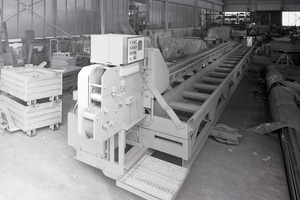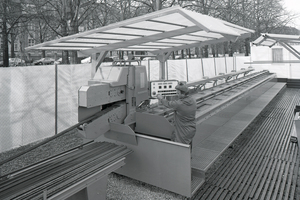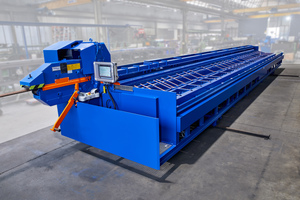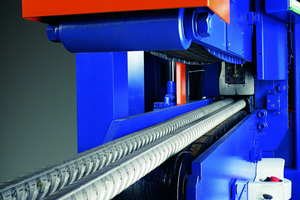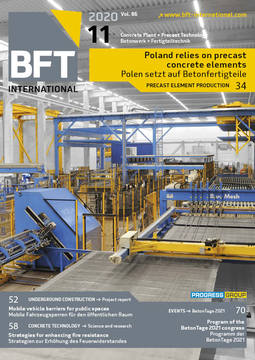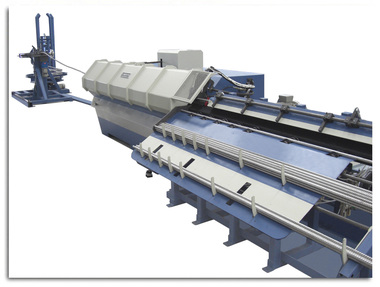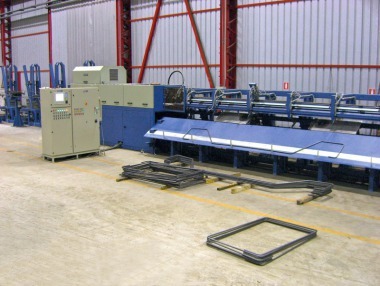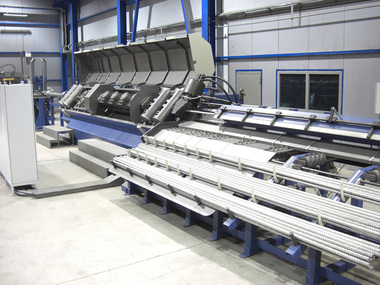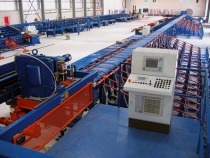40 years Metax rebar cutter – a retrospective
It was in the year 1980: the entire machinery and plant-engineering sector had for some time already undergone an immense transformation process. Manual work was increasingly replaced by automation and control technology. This also applied to the hard, physically demanding processing of reinforcing steel, which had initially relocated to central sites and later to shop floors.
This development had begun early in Switzerland, where the first bending operations were set up. Beginning from approximately 1960, the first central plants in Germany went into operation. At that time, measuring trolleys, onto which cutters were mounted, were used. The steel was pulled from storage with a cable winch up to a longitudinal stop for cutting. In this way, good performance was already achieved. But continuous production was not possible, because it was necessary to repeatedly pull the winch to the stops, which had to be constantly readjusted to different lengths. Automatic rebar cutters able to cut rebars to different lengths were offered to speed up and facilitate processing.
However, the quantity output was still too low. The next objective was a plant able simultaneously to cut several rebars in the diameter range from 8 to 40 mm. Peddinghaus in Gevelsberg, Germany, developed the Metax multi-rebar automatic cutter exactly for this purpose, which it offered beginning in 1980 and which featured a completely new measuring and pulling-in system: several rebars were simultaneously tensioned and pulled in neatly and securely on rubber-coated studs via a chain system, also enabling non-slip, high-acceleration rates for short lengths. In addition, measuring took place without stops.
Control engineering was at that time not available on the market: hard- and software was developed in-house, coordinated with specialists and brought to production maturity in test series. Testing and improvements in bending operations under demanding conditions followed only then. Metax was required to function just as reliably in production halls as in the open air – in the cold, rain and snow – and to continuously produce and be easily operated precisely and easily. There were problems and setbacks. At times, the entire project was about to be abandoned: but it was not given up.
Final breakthrough at Bauma 1983
The ultimate breakthrough came at Bauma 1983 in Munich. On the outdoor exhibition area on Theresienwiese, Metax, according to the manufacturer, impressed with performance, saving of human exertion, ease of operation, high precision, even then state-of-the-art control engineering – as well as stopless measuring and especially stable and heavy structural design. Well-filled order books and confirmation for the Metax concept were the results.
At the Bitburg production site in Germany, which had been extended by one hall and by high-efficiency steel construction, series production was started. Practical experience and developments in control technology were integrated; drive engineering and hydraulic systems were continuously adapted. Some adjustments to the models were made over the years, in line with technical and price developments. Since reinforcing steel processing was shifted to cost-efficient, well-structured plants, little has changed in production processes
Rolf Klein, former Head of Product Marketing and "obstetrician" of the former Metax generation, explained: “Although increasing processing from coil has changed the structures, cutting from bars is especially important for cost-efficiency. Bar material is less expensive than coil material. This price advantage plays a critical role when deciding on a production system. Mobile bar cutters therefore have an important position. They are the pacemakers for the downstream processing machines and therefore the key for overall plant performance. Metax multi-bar automatic cutters combine the advantages of fast and continuous operation, otherwise offered only by stationary systems, with the high flexibility of a mobile cutting system.”
Proven successful in many hundreds of plants
Today’s Metax multi-bar cutting machine features its fast and high-precision measuring and pulling-in system – successfully tested in hundreds of plants. It is of rugged construction, has generously dimensioned braking-motors, a powerful hydraulic rebar cutting machine, a Siemens PLC control with PC 477 and a touch screen. The high cutting performance is achieved by an especially robust hydraulic cutting machine, the heart of the system. With the stopless pull-in system, measuring distances beyond the nominal value can be processed. This is done by using a rotatable channel extension. In this way, bar lengths of 20 m, for example, can also be processed.
Pedax has optimized the successful Metax series and ensured saving of expensive energy. It enables work with even more precision, greater speed and less noise. Cutting performance and pull-in speed are important for production performance. Of special significance are the ineffective times that occur due to cross- and distribution travel. Here, reserves must be exploited and the suitable Pedax plant system developed based on the needs of the particular production process at hand.
Two different type series
In general, two type series are differentiated, which can be delivered with two, three or even six transport lanes: for Metax GXE, the bars are rolled off onto a predefined lane immediately following cutting. Metax GXN collects the cut material in a separate lane and subsequently deposits it, via hydraulic stops, into a predefined position on the lane on which several cycles can be collected. In this way, production can continue for an extended time without interruptions. The cut bars, moreover, are placed flush to the bending lanes – in the way the bender needs them. Most operators choose this type of construction because the reduced idle time quickly amortizes the additional flexibility.
Today’s machine generation features a servo-controlled hydraulic system. The hydraulic system is activated only when work is done and only then on command. This results in energy cost savings of approx. 80 %.
Pedax-Software, Siemens PC 477 technology and servo-hydraulics enable diameter-based cutting. Every bar diameter is allocated a specific stroke distance. This increases the number of cycles of the cutting machine and crucially reduces cycle times.
Rolf Klein in conclusion: “The Metax anniversary officially began in August. For one year, Pedax offers an impressive special Metax edition. In addition to attractive features with many advantages, the anniversary model is supplied in a striking modern special paintwork. Let’s hope that there will soon be trade shows again at which we can share views and present new products.”

